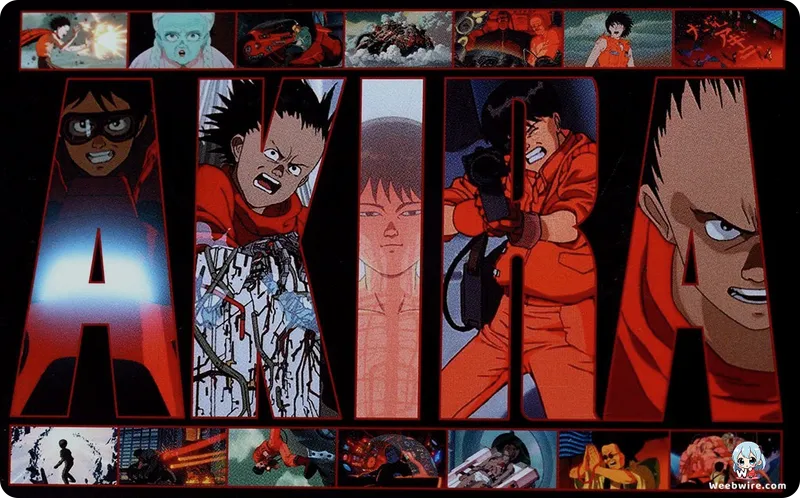Akira's Unseen Depths: Unearthing the Revolutionary Secrets and Prophetic Visions Behind a Masterpiece

Katsuhiro Otomo's monumental 1988 animated epic, Akira, continues to stand as a towering achievement in cinema. Celebrated not only for its breathtaking animation and grim dystopian narrative, the film is also rich with astonishing facts that solidify its enduring legacy. Decades after its initial release, Akira still captivates audiences and inspires new generations of creators, consistently revealing surprising insights into its meticulous production and remarkably prescient vision.
Pioneering Animation and Unprecedented Budget
A truly revolutionary aspect of Akira was its pioneering animation methodology. Deviating sharply from standard Japanese animation practices of the era, Akira was almost entirely pre-scored. This innovative technique, where voice acting was recorded before animation began, a method more common in Western productions, enabled animators to achieve unparalleled precision in lip-syncing. This resulted in exceptionally natural, nuanced character expressions and movements, significantly contributing to the film's hyper-realistic texture.
This unwavering commitment to detail was further underscored by its staggering production budget, reportedly ¥1.1 billion, approximately $9.5 million USD at the time. This made it the most expensive anime film ever produced upon its release. This unprecedented financial investment translated into an astonishing 160,000 animation cels and over 2,000 meticulously hand-painted backgrounds, culminating in unparalleled fluidity and visual opulence. While many anime productions judiciously employed limited animation to conserve resources, Akira frequently animated at a full 24 frames per second, particularly during its most dynamic sequences. This was a rare and extraordinarily demanding feat that dramatically elevated its visual spectacle.
Otomo's Vision and Narrative Adaptation
Katsuhiro Otomo, the visionary force behind the original manga, wielded an extraordinary degree of creative control over the film adaptation. He personally directed and co-wrote the screenplay. This direct involvement ensured a faithful translation of his artistic vision to the screen, despite the immense challenge of distilling a sprawling 2,000-page manga epic into a concise two-hour feature film. The cinematic adaptation, while preserving the core themes and characters, judiciously diverged from the manga's plot in its latter half, crafting a self-contained narrative that masterfully stands on its own.
A Groundbreaking Auditory Landscape
The film's auditory landscape is as pioneering as its visuals. The iconic score, masterfully composed by Geinoh Yamashirogumi, a collective comprising hundreds of musicians and performers, is a unique and captivating blend of traditional Japanese Noh music, resonant Indonesian Gamelan, and cutting-edge electronic soundscapes. This complex, deeply tribal-infused score provides a potent, often unsettling, sonic tapestry for Neo-Tokyo's descent into chaos. Moreover, the sound design itself was revolutionary, with countless sound effects custom-created for the film, fostering an incredibly immersive and visceral atmosphere. The unmistakable roar of Kaneda's motorcycle, the ethereal psychic reverberations, and the gritty symphony of a decaying metropolis are all meticulously crafted elements that profoundly enhance the viewing experience.
The Enduring 'Akira Slide' and Prophetic Coincidence
Perhaps one of the most recognizable and widely emulated animation sequences globally is the signature 'Akira slide,' Kaneda's dramatic, brake-locking motorcycle skid. This seemingly simple maneuver has blossomed into an enduring animation trope, a powerful testament to the film's dynamic motion capture and profound understanding of kinetic energy. It has been paid homage and playfully parodied countless times across various media, firmly cementing its place in pop culture history.
Akira also boasts a fascinating, almost prophetic, coincidence. Set in the futuristic Neo-Tokyo of 2019, the film famously features a stadium wall emblazoned with a countdown to the 'Tokyo Olympics 2020.' This remarkable detail, conceived decades earlier, became an eerie reality when Tokyo was indeed selected to host the 2020 Summer Olympics years after the film's release, adding yet another layer of mystique to the movie's prescient glimpse into the future.

Profound Influence on Western Cinema and Meticulous Detail
The film's profound influence extends far beyond the realm of animation, significantly shaping Western cinema. Its pioneering dystopian themes, cutting-edge cyberpunk aesthetic, and sophisticated storytelling paved the way for a broader international appreciation of anime. Esteemed filmmakers such as the Wachowskis of The Matrix fame, Rian Johnson of Looper, and even the Duffer Brothers of Stranger Things have explicitly cited Akira as a paramount inspiration, showcasing its pervasive impact on visual storytelling and genre filmmaking.
Beyond its grand narrative scope, the painstaking attention to detail in Akira is vividly evident in its masterful lighting and background art. Almost every single background was meticulously hand-painted, frequently employing a unique technique where artists would first apply the light sources before adding shadows. This method conjured a more realistic and dynamic sense of depth and atmosphere, particularly striking in the film's iconic nighttime cityscapes, which pulsate with a vibrant neon energy. Kaneda's iconic red motorcycle, a sleek, powerful machine personally designed by Otomo, has transcended its role as a mere vehicle to become an enduring symbol of the film, inspiring countless replicas and works of fan art, solidifying its status as a design marvel.
Timeless Themes and Enduring Appeal
Ultimately, Akira is far more than just a visual spectacle; it delves deeply into complex philosophical inquiries concerning human evolution, the perilous consequences of unchecked power, societal decay, and the cyclical nature of destruction and rebirth. The tragic narrative of the Espers, children burdened with immense psychic abilities, serves as a poignant exploration of humanity's ongoing struggle with its own destructive potential. It is a film that generously rewards multiple viewings, each time revealing new layers of its profound narrative and stunning artistry, firmly cementing its position not merely as an anime classic, but as an undisputed masterpiece of world cinema that continues to resonate powerfully decades after its debut. Its enduring appeal is a testament to its timeless themes and its unwavering commitment to pushing the very boundaries of animation, making it a subject of endless fascination for cinephiles and anime enthusiasts alike.
Credits
Akira
Author
Katsuhiro Otomo
Cover Art
Katsuhiro Otomo
Studio
Tokyo Movie Shinsha
Publisher
Kodansha
Producers





